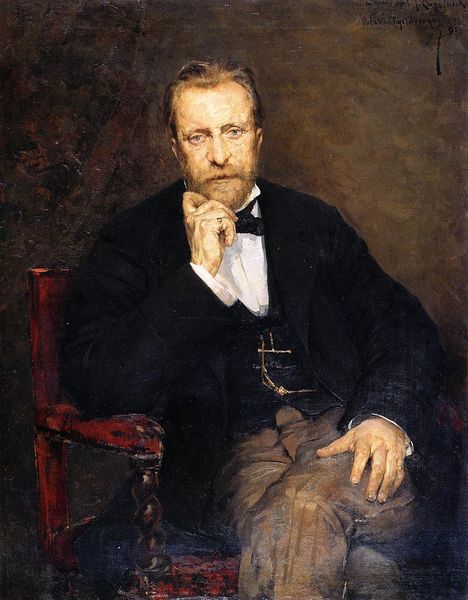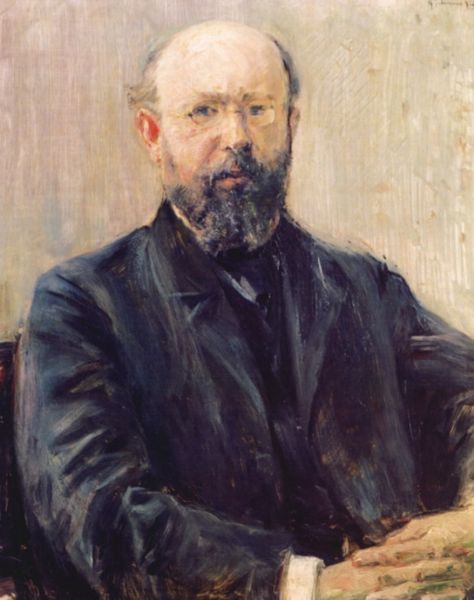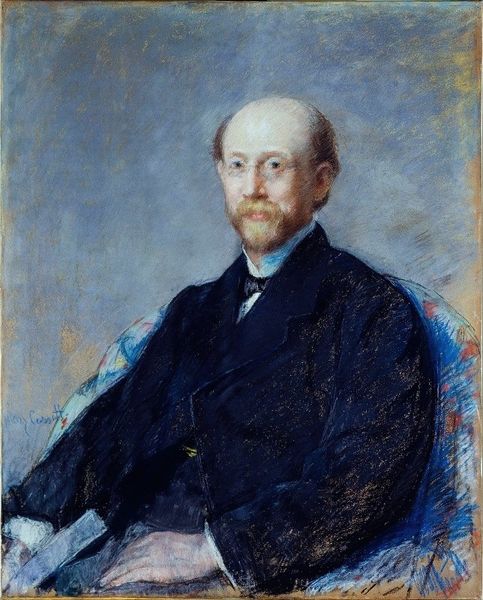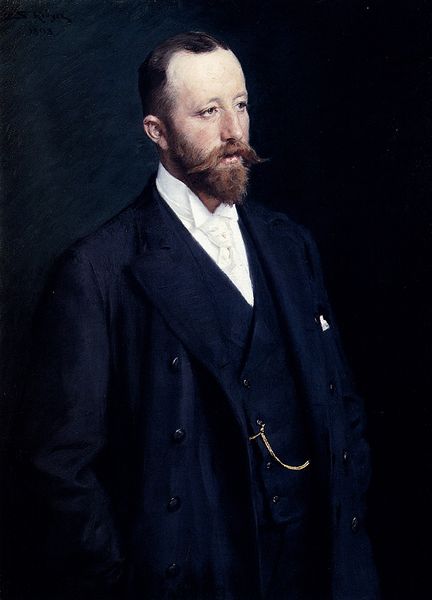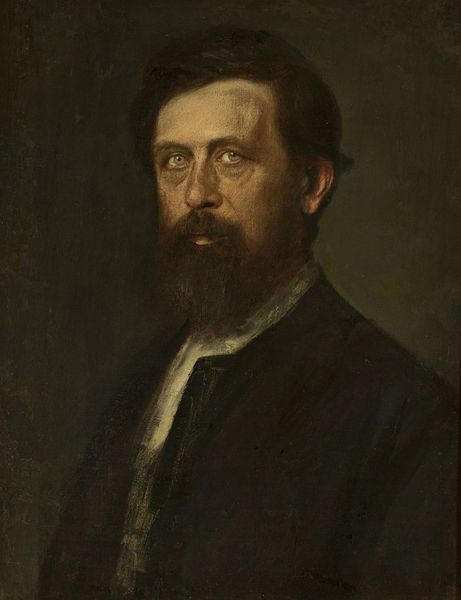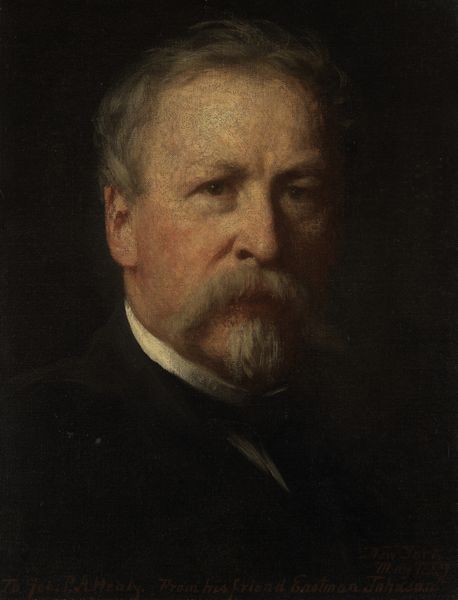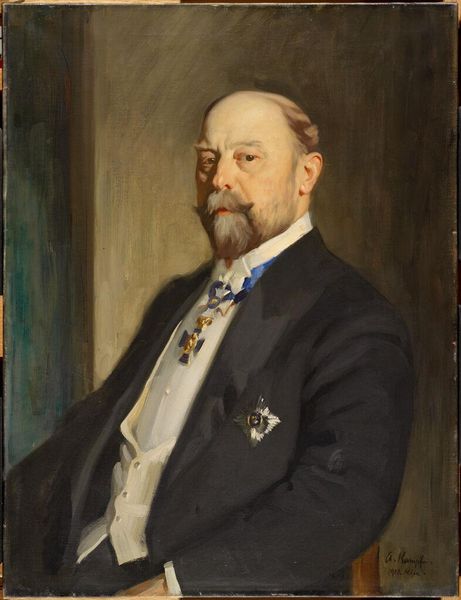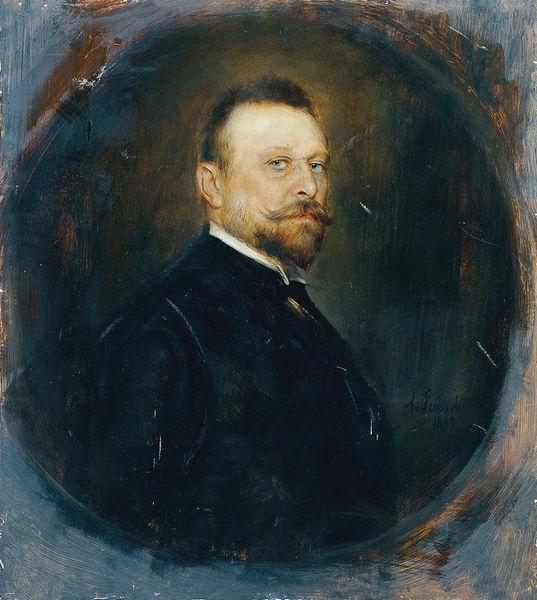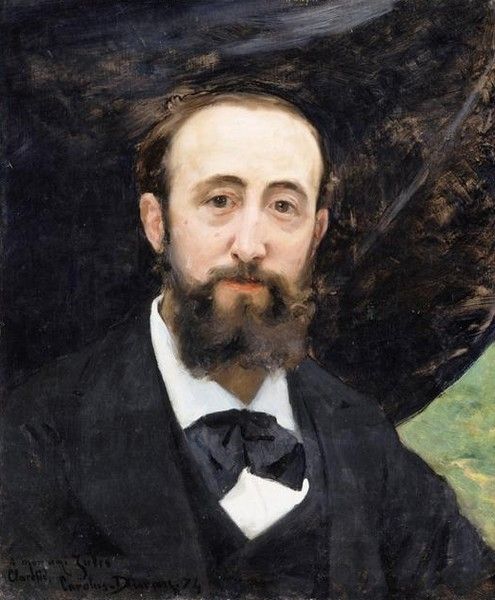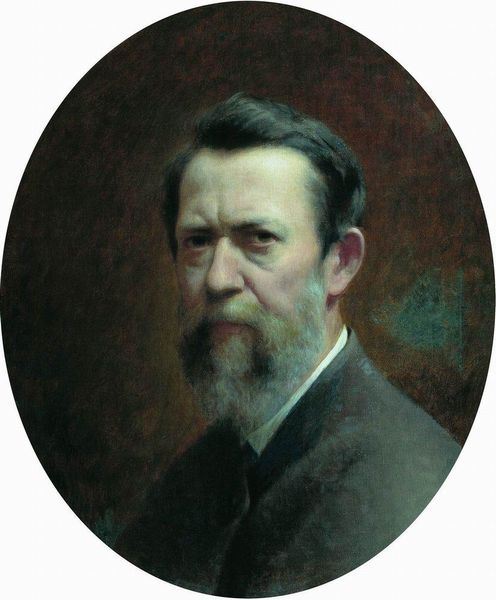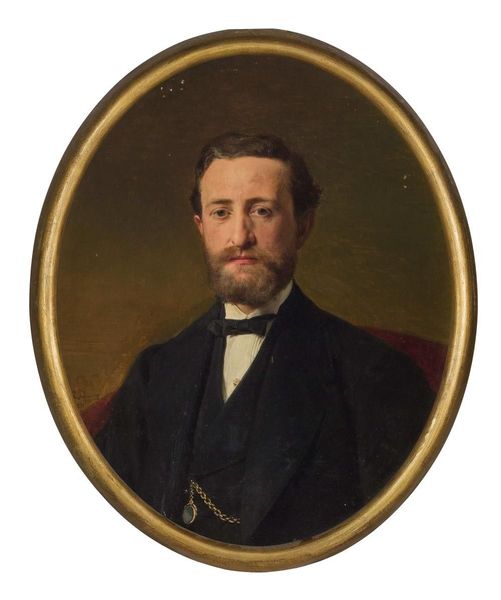
Copyright: Public domain
Curator: This is Alexei Korzukhin’s 1880 “Portrait of A.V. Vysheslavtsev,” crafted in oil paint. What's your initial take? Editor: A somewhat somber mood, I’d say. The man’s steady gaze and dark suit, combined with that dimly lit background, suggest a personality that is at once both serious and contained. Curator: Right, and looking at the facture – the visible brushstrokes – especially in the beard and hair, reveals Korzukhin’s skillful manipulation of oil paint to capture texture and form. Consider the material reality: the pigments carefully layered, the canvas support, the sheer labor involved in its production. Editor: Absolutely. Vysheslavtsev, who was he exactly? He looks like a man of importance. Someone established and well-positioned in Tsarist Russia. This piece screams status. It's hard not to consider how portraiture of this kind was commissioned to communicate certain messages of power, influence, and social standing in late 19th century Russian society. Curator: Certainly, and what also fascinates me is how the materiality intersects with the artistic conventions. The way light is caught and rendered – it has the look of the Romantic style meeting Russian Realism and a dash of Academic art. It suggests specific production methods valued at the time, and how even this man's mole, a detail usually eliminated from standard aristocratic portraiture, comes through as important detail in a Realist presentation of him. Editor: I agree. These details serve to elevate his status but also ground him in reality. It prompts us to think about the narratives this kind of art reinforced or challenged. Did it solidify hierarchies, or offer some level of accessible depiction of the leaders and celebrities of Russia at the time? Curator: An interesting contradiction isn't it? Highlighting social position while at the same time reflecting Realist tenets of accurate depictions. Perhaps by doing this, these Realist painters brought in newer, burgeoning capitalist influences into the ossified system of pre-Revolution Russia. Editor: Very compelling point! That certainly allows for interesting re-thinking about who portraiture served and the art establishment within Russian society itself. Curator: Thinking of Korzukhin’s materials then and his specific touch—he's playing a bit against type as the Russian empire transitions through these shifting paradigms. It creates this fascinating moment in time. Editor: Precisely, and the impact the artistic output had within the Russian political sphere as well as amongst its many people. Always worth further study!
Comments
No comments
Be the first to comment and join the conversation on the ultimate creative platform.
